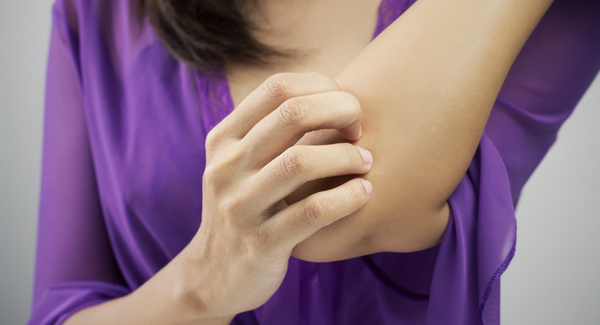Managing Skin and Nail Problems With Psoriatic Arthritis
How psoriasis affects your skin and nails when you have psoriatic arthritis may be different than if you have psoriasis alone.
By Sonya Collins
For most people living with psoriatic arthritis (PsA), psoriasis is also a part of your daily reality. But the skin condition may behave differently than it does in people who don’t have arthritis.
“There’s not a cookie cutter model for the course of psoriasis in someone who also has psoriatic arthritis. But there are certainly patterns of skin involvement that are more associated with PsA,” says Wilson Liao, MD, director of the Psoriasis and Skin Treatment Center at University of California San Francisco.
For those who live with skin and joint conditions, severity and treatment of psoriasis may differ from those who have psoriasis alone.
Understanding PsA Skin Symptoms
Psoriasis is often more severe in people who have PsA, and PsA joint flares can worsen skin symptoms. The skin disease can affect any part of the body, but it tends to crop up in a few key areas. For people who have PsA, psoriasis most often affects the scalp, skin folds and nails.
“If you have severe psoriasis, which means it covers more than 10% of your body for more than four years, you are at higher risk for psoriatic arthritis,” says Alex Ortega Loayza, MD, an assistant professor of dermatology at Oregon Health Sciences University.
Treating Joints and Skin
People who have psoriasis alone may use medications on the surface of the skin or receive light therapy to relieve their symptoms and slow disease activity. “Those help the skin, but they don’t penetrate deep enough into the joint to help the arthritis, too,” says Dr. Liao. “For a person with psoriasis and arthritis, we try to kill two birds with one stone.”
Doctors use pills or injectable drugs that can get to the systemic causes of psoriatic disease and act on the skin and joint conditions. “These treatments may improve the skin and the joints by 50–80%, but there could still be some joint pain or skin symptoms,” says Dr. Liao. In that case, he says, people might get additional treatments, also called adjuvant therapy, to take care of remaining symptoms. “It could be phototherapy for the skin or a pill for the joints,” he says.
Scalp
If the remaining symptoms are on your scalp, tar-based and salicylic acid shampoos can help with mild psoriasis. They also help relieve itching. Your doctor might prescribe a topical treatment for moderate to severe symptoms.
You can help your topical medications get into the top layer of the skin and work better by carefully softening and removing plaques from your scalp before you apply the medications. Soak your scalp in warm water or apply lotion to your damp scalp. Then hold a comb almost flat against your head and move it gently in circular motions to remove the softened plaques.
Skin Folds
Psoriasis of the skin folds (known as inverse psoriasis), including arm pits, under the breasts, the groin and genitals, is also common in psoriatic arthritis. These areas can be difficult to treat and are more prone to infection.
“Some patients don’t like to talk about it, but you need to mention it to your doctor because it requires different treatment,” says Dr. Loayza.
Skin folds are sensitive, so doctors might prescribe less potent topical medications than you would use elsewhere on the body. Phototherapy is often used in these regions, too.
It can be tricky to know whether you should try to keep the area moisturized or dry. While you may be diligent about moisturizing other affected areas, it’s moisture that might promote infection in skin folds.
“When the area is very moist, the doctor first has to rule out infection. Then we can repair the skin barrier – if it’s red and irritated – with more creams,” says Dr. Loayza. “Then when it’s no longer tender, we want to try to keep it dry. The area can be complicated and requires a little more effort to come up with a treatment plan.”
Caring for Nails
Up to 80% of people with PsA have nail symptoms. “Hand and nail symptoms can be embarrassing and cause a lot of anxiety for many people,” says Dr. Liao. Nail symptoms can be hard to treat, he adds. Topical creams can’t get through nails to clear up the changes underneath. Your doctor might recommend a corticosteroid shot under the surface of the affected nails. About a third of people who have nail symptoms also have a fungal infection, which your doctor can treat with antifungal medications.
Diagnosed With Psoriatic Arthritis?
Get the latest news and tips about living with Psoriatic Arthritis in the Living Your Yes! e-newsletter.



